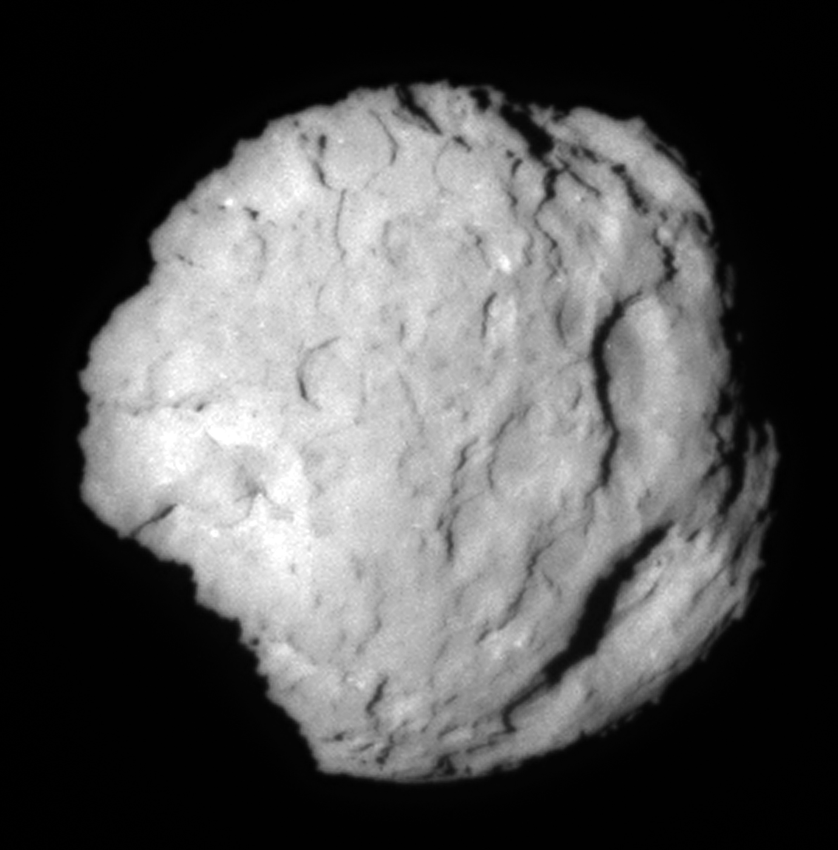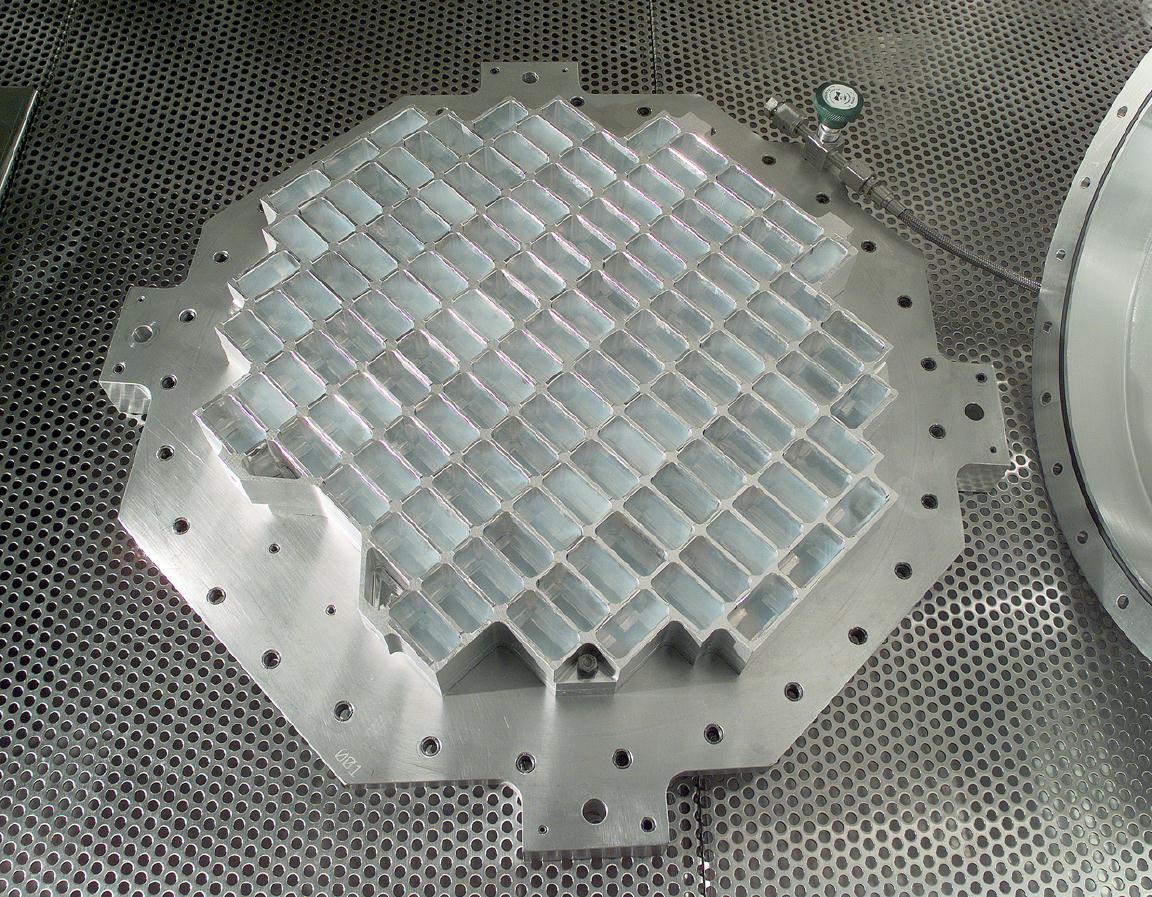It's been a 'wild' ride for the comet sampled by NASA's Stardust mission
"The comet was a witness to the events that shaped the solar system into what we see today."

The first comet sample-return mission is still revealing secrets about its icy target — even 18 years after bringing to Earth a precious cargo for scientists to dissect.
After launching in 1999, NASA's Stardust mission rendezvoused with the comet named 81P/Wild 2 (81P/ means it was the 81st periodic comet to be recognized) in 2004, capturing thousands of tiny dust particles from the comet's tail in a collector made from an ultralight material called "aerogel." On Jan. 15, 2006, Stardust returned the sample capsule to Earth, which then parachuted down toward a soft-landing in Utah. Those transported particles of comet dust are still being analyzed today.
"Nearly every Wild 2 particle is unique and has a different story to tell," Ryan Ogliore, who is an associate professor of physics at Washington University in St. Louis, said in a statement. "It is a time-consuming process to extract and analyze these grains, but the science payoff is enormous."
The comet's name is actually German and is pronounced "Vilt 2," after Swiss astronomer Paul Wild who made his second comet discovery when he found it in 1978.
Related: James Webb Space Telescope catches young planetary system by its dusty 'cat's tail' (photo)
Prior to the return of the Wild 2 sample, scientists had suspected the comet would be composed of primordial material, specifically interstellar dust and particles from the solar nebula that formed our solar system. However, while some interstellar particles were discovered, the majority of particles studied appear to have been processed during different epochs in time as well as in diverse regions of the young solar system. This hints at a fascinating history. The comet could represent a precursor to the chemistry we see in the modern-day solar system.
"Comet Wild 2 contains things we've never seen in meteorites, like unusual carbon-iron assemblages, and the precursors to igneous spherules that make up the most common type of meteorite," said Ogliore. "And all of these objects have been exquisitely preserved within Wild 2."
Breaking space news, the latest updates on rocket launches, skywatching events and more!
A noticeable absence in the sample concerns dust released from collisions between asteroids, which are believed to have happened frequently in the topsy-turvy environment of the early solar system. During these days, asteroids and protoplanets tumbled chaotically, having not yet settled on their orbits. The lack of this type of dust implies that Wild 2 formed either before or in a different location to such rocky asteroids.
Indeed, Wild 2 probably spent most of its life orbiting beyond Neptune, in the Kuiper Belt and Scattered Disk, or perhaps even in the more distant Oort Cloud. Out there, hundreds of astronomical units (AU) from the sun, the temperature would not get above –223 degrees Celsius (–370 degrees Fahrenheit), so liquid water or heat could not have chemically altered the comet's composition.
At some point, Wild 2 was nudged in-system, perhaps perturbed by the gravity of a passing star and ending up on an elongated 43-year-long orbit that ranged from 3.74 billion kilometers (2.3 billion miles.) — for comparison, Neptune is 4.3 billion kilometers (2.67 billion miles) from the sun — and 748 million kilometers (464 million miles) from the sun, getting almost equidistant with Jupiter. Then, in 1974, Wild 2 passed within a million kilometers (621,371 miles) of Jupiter, meaning the giant planet's gravity altered the comet's orbit again, shortening it to a 6.2-year-long orbit ranging from 783 million kilometers (487 million miles) from the sun to 238 million kilometers (147 million miles) from the sun, which is just beyond the orbit of Mars.
Stardust collected less than a milligram's worth of comet dust, which is a tiny amount, especially compared to the 70.3 grams of rocks and dust that OSIRIS-REx brought back from the asteroid Bennu in 2023. However, despite the small mass, it still accounts for more than 10,000 cometary dust grains larger than a micrometer in size. And thanks to modern instruments and analysis techniques that were not even available in 2005, new discoveries will continue to be made about Wild 2.
The comet is, in effect, a time capsule from the beginning of the solar system that has been kept in deep freeze for the best part of 4.5 billion years. In the time since Wild 2's formation, the young solar system has transformed itself into the grouping of eight planets, numerous dwarf planets and belts of asteroids and comets we see today. As such, objects such as Wild 2 that have been there throughout it all have an important story to tell.
"The comet was a witness to the events that shaped the solar system into what we see today," said Ogliore.
Ogliore’s review article describing the findings from Stardust thus far were published in the November 2023 issue of the journal Geochemistry.

Keith Cooper is a freelance science journalist and editor in the United Kingdom, and has a degree in physics and astrophysics from the University of Manchester. He's the author of "The Contact Paradox: Challenging Our Assumptions in the Search for Extraterrestrial Intelligence" (Bloomsbury Sigma, 2020) and has written articles on astronomy, space, physics and astrobiology for a multitude of magazines and websites.


